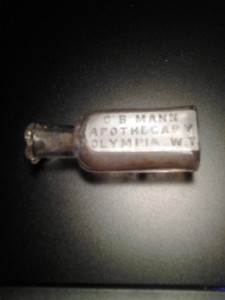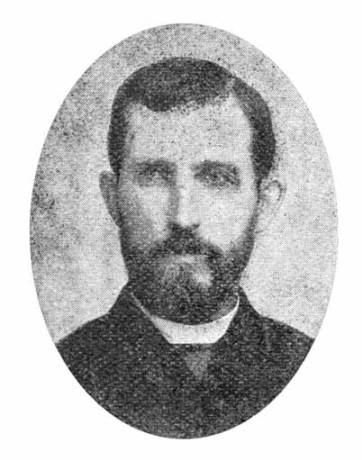Digging Up History: The Unintentional Washington State Library Connection
 From the desk of Steve Willis, Central Library Services Program Manager of the Washington State Library:
From the desk of Steve Willis, Central Library Services Program Manager of the Washington State Library:
A few decades ago, back when my family still had a farm out in northwestern Thurston County, my father noticed a small glass object that had surfaced after he plowed the field. The farm had once been home to an inn called “The Hicklin Halfway House” on the stage road between Olympia and Montesano in Territory days. We were used to plowing up small pieces of china and glass. But this was different.
Except for some chips on the opening, this small glass bottle is intact, about 3 inches high, and has the raised label: C.B. Mann, Apothecary, Olympia, W.T.
As it turns out, Champion Bramwell Mann ran a drugstore on the southeast corner of 4th and Washington in Olympia, site of the present Security Building. He was a prominent figure in the local history of the city, even serving as Mayor from 1894-1895. And, believe it or not, he had a short stint as the Territorial Librarian in 1870.
And so did his father, Sylvester Hill Mann. You can read about them and the other colorful characters who kept the flame alive in Washington’s oldest public institution on WSL’s biographical page: The Territorial Librarians.
Mann also appears in digital form on our Thurston County Pioneers Before 1870 section.
This was literally digging up some history with a Washington State Library connection. Even so, I don’t even want to try and imagine what sort of concoction this bottle once contained.
You can follow any responses to this entry through the RSS 2.0 feed. Both comments and pings are currently closed.






